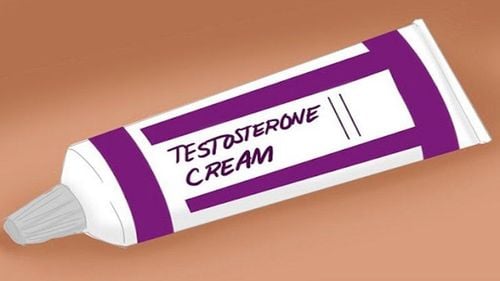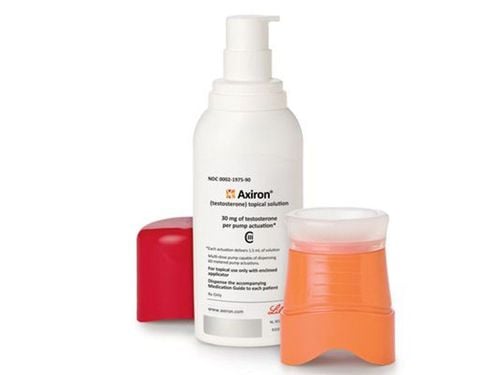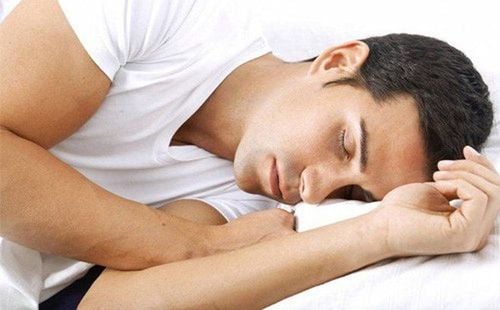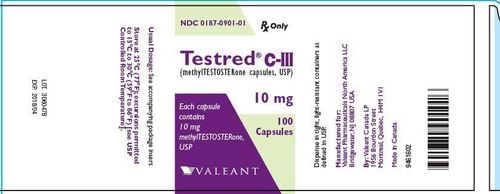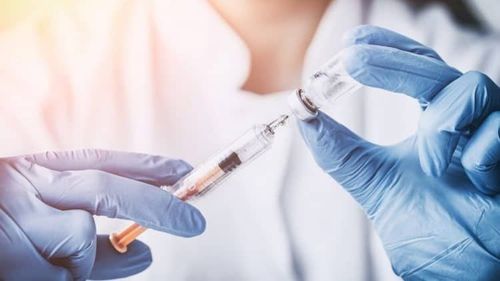This is an automatically translated article.
The article is professionally consulted by MSc Vo Thien Ngon - Urologist, Department of General Surgery, Vinmec Danang International General Hospital.
Testosterone is a hormone produced by the testicles and is responsible for the development of male sexual characteristics. Testosterone is also important for maintaining muscle mass, red blood cell counts, bone development, feeling healthy, and sexual function.
1. What is Erectile Dysfunction?
Erectile dysfunction is defined as a condition in which the penis is not erect or erect enough and lasts long enough for sexual intercourse.
Erectile dysfunction is a disease occurring in men that has existed for thousands of years and is increasingly common today. This disease is not a very dangerous disease affecting the health and life of men, but it greatly affects the quality of life as well as the bravery and faith of men.
2. Symptoms of Erectile Dysfunction
Symptoms of erectile dysfunction may include:
Difficulty getting an erection. Difficulty in keeping the penis erect. Reduced sex drive. When to see a doctor? Men do not have sexual desire and the penis is not erect. Men also have sexual desire and the penis is not erect, also known as "The upper and lower are not listening". The penis may be erect but not hard enough to be inserted into a woman's vagina, or it may be hard enough to be inserted into a woman's vagina but not maintain an erection during sex until ejaculation. fainting before ejaculation.
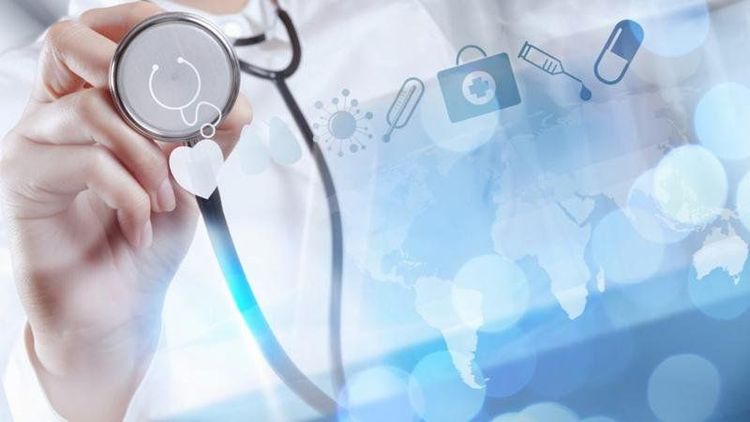
3. How to get rid of erectile dysfunction?
3.1 Short-term treatment These help to achieve or maintain an erection but do not address the underlying cause of erectile dysfunction.
3.2 Addressing the underlying cause The main treatment is to address the cause of erectile dysfunction such as:
Due to pelvic trauma, atherosclerosis, high blood pressure, drug side effects , ... makes the blood pumping force not strong enough during sex. People with penile curvature, penile atherosclerosis, nerve microvascular damage, ... create too great blood resistance in the penis. Having problems and lesions in the penis, such as: rupture of the cavernous body, the white capsule is too thin, the foreskin is narrow, .... Eating habits, alcohol abuse Smoking: Nicotine in smoke is limited. blood flow to the penis, disrupting blood flow in the penis. Inactivity 3.3 Psychological treatments The cause of erectile dysfunction can be psychological and the condition itself can lead to anxiety. Psychological treatments can reduce anxiety, increase self-confidence, and improve relationships with partners. In addition, these changes may increase the odds that other treatments are more effective.
Excessive anxiety also affects the effectiveness of the treatment. Addressing this anxiety can improve the patient's overall outcome.
4. Can erectile dysfunction go away on its own?
The right treatment can reduce or eliminate the symptoms of erectile dysfunction.
Doctors have identified two types of erectile dysfunction:
Primary erectile dysfunction is erectile dysfunction that occurs in adulthood. This is a rare case. Secondary erectile dysfunction is the inability to have a previously normal erection. This is the most common type. Secondary erectile dysfunction can be reversed and is usually temporary. Primary erectile dysfunction may require more intensive treatment and is based on the current medical condition.
Erectile dysfunction is usually treated with medication or surgery. However, a person can treat the underlying cause and the symptoms can be reversed without medication.
Treatment regimens depend on the individual patient's condition. Some find that traditional treatments, such as surgery or medication, are not effective.
5. What Causes Low Testosterone?
As a man ages, the amount of testosterone in the body naturally decreases. This decline begins after age 30 and continues throughout life. Some other causes of low testosterone levels are:
Trauma, infection, or loss of testicles Chemotherapy or radiation therapy for cancer Genetic abnormalities such as Klinefelter syndrome Hemochromatosis (too much iron in the body) Disorders dysfunction of the pituitary gland or hypothalamus Inflammatory diseases such as granulomas (also known as sarcoidosis) Medications, especially hormones used to treat prostate cancer and corticosteroids, chronic kidney failure, stress, alcoholism, illness cirrhosis Obesity (especially abdominal fat)
6. What are the Symptoms of Low Testosterone?
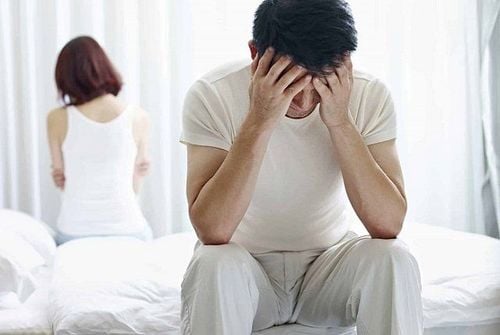
Without enough testosterone, a man can lose sex drive, experience erectile dysfunction, feel depressed, feel weak and have trouble concentrating. Low testosterone can cause physical changes such as:
Decrease in muscle mass, with an increase in body fat Changes in cholesterol levels Decrease in hemoglobin and possibly mild anemia Osteoporosis, brittle bones Decrease body hair Changes in cholesterol and lipid levels
7. How Do I Find Out If I Have Low Testosterone?
The only accurate way to detect this condition is for a doctor to measure the amount of testosterone in the blood. Since testosterone levels fluctuate throughout the day, several measurement tests are needed to detect deficiency. If possible, it's best to test early in the morning, when testosterone levels are highest.
Note: Testosterone replacement therapy should only be used by men who have clinical signs and symptoms and have laboratory evidence of low testosterone levels.
8. How is low testosterone treated?
Testosterone deficiency can be treated by:
Intramuscular injection anywhere from two to 10 weeks apart Testosterone gel applied to the skin or inside the nose Testosterone adhesive material is applied to the teeth twice a day days Subcutaneous injections have a long-acting effect of Testosterone Patches. Each of these options provides appropriate hormone levels; However, they all have different advantages and disadvantages. Talk to your doctor to see which method is best for you.
9. Who should not take Testosterone replacement therapy?
Men with prostate or breast cancer who should not take testosterone replacement therapy or who have severe urinary tract problems, severe untreated sleep apnea, or uncontrolled heart failure controllable.
All patients considering testosterone replacement therapy should undergo a thorough prostate cancer screening, rectal exam, and PSA (Prostate Specific Antigen) test prior to initiation. this therapy.
10. What are the side effects of Testosterone replacement therapy?
In general, testosterone replacement therapy is safe. And some possible side effects:
Acne or oily skin. Light water retention. Stimulates prostate tissue. Increased risk of abnormal growths in the prostate. Big breasts. Increased risk of blood clots. Increases the degree of sleep apnea. Reduced testicle size. Increased aggression and mood swings. May increase risk of heart attack and stroke. These are physical side effects, laboratory side effects include:
Changes in cholesterol and lipid levels. Increase the number of red blood cells. Decreased sperm count, causing infertility (especially in young men). Increased PSA (prostate-specific antigen levels). Therefore, if you are taking hormone replacement therapy, you should have regular medical check-ups to detect early symptoms of side effects caused by Testosterone replacement therapy.
Please dial HOTLINE for more information or register for an appointment HERE. Download MyVinmec app to make appointments faster and to manage your bookings easily.
Article referenced source: Webmd.com




